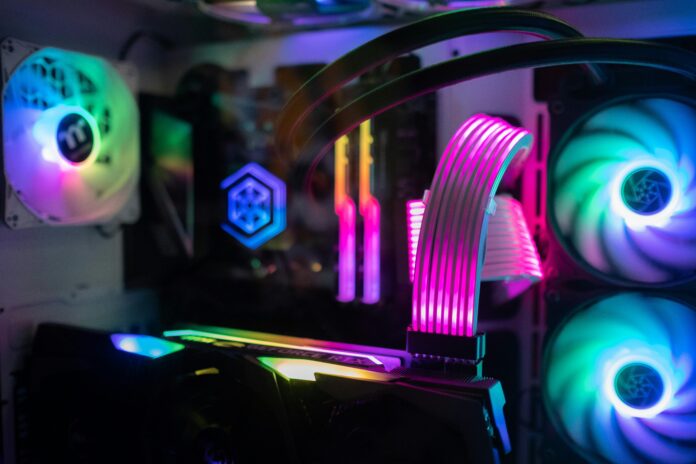Skip the content
I once heard a PC gamer say this about RGB lighting. “Once you get in, you can’t get out,” as though going down that road would initiate you into a mysterious and inescapable religion.
It might be a bit of an exaggeration, but I can now relate to that statement after being fully initiated into RGB lighting when I built my gaming rig.
The truth is, I love and hate RGB lighting. Yes, RGB lighting can be the greatest thing ever. It adds a much-appreciated layer of spice to gaming sessions like CyberPunk or Oblivion.
On the other hand, it can make me want throw rotten turnips on my PC case.
When I first built my rig, it was obvious that the RGB would be a great addition. It wasn’t to dance Scottish Jigs in the rainbow glow of my dimly-lit room, but to enjoy the oranges and muted crimsons; to use it for a kind ambient night light that would help me find my coffee cup while gaming.
It was also a great way to impress my friends when they came over.
I would say, “Oh, that old RTX 4070,” as my friends stared at it through the glass panel of my case. But I was ecstatic inside… My rig looked amazing, was a sight to see, and was exactly what I had always wanted (or what marketers told me I wanted).
That was just the beginning. The situation quickly deteriorated when I realized that I had created a clown-computer, a computer whose RGB parts were controlled by different software applications and were of varying brands. I was unable to synchronize colors or effects between the different RGB parts. My graphics card, PSU and RGB cabling would not play nice together, and that was not cool.
My RGB keyboard settings should have also been easy to change, but they kept changing to the default “ebb-and-flow” effect each time I rebooted. It’s enough to say that there is only so much red light flashing from my display before I start seeing it in a literal sense.
Then came the faulty parts that started to show up in the LED lighting strip. I lost bulbs along the top of my case. It was a glaring eyesore. Another strip was also problematic, as the colors did not match what I had selected in my companion application or in other strips.
I was also surprised to find that the strips in my PC were interfering with its performance. They blocked critical cable routes, and caused necessary cables to block airflow. I figured that was why my GPU temperatures were higher than expected.
I was shocked and took notice. It’s one thing to have a dodgy look, but I was not going to let my RGB compromise my FPS. No siree!
I knew I had made a mistake. I had chosen a superficial look over a low-maintenance set-up, like a bowerbird mesmerized with flashy bottlecaps instead of catching his dinner. Now, I’m going to fix it. The problem is that RGB is everywhere. It’s tangled through my PC, like a blackberry hedge infestation. I estimate that I’ll need to spend $700 on replacing all the parts with minimalist alternatives I don’t need to maintain.
For now, I’m happy with my rig, RGB problems and all. But I know that I will have to spend a lot of money and time to fix the mistakes I made.
My next gaming rig will have a case that is RGB-free. I’m going for industrial blacks, silvers, and browns in wood or metal — heck, even rope! But no RGB. I’m not drinking Kool-Aid any more.
Author : Dominic Bayley.Australian Editor, PCWorld.
Dominic Bayley, a tech enthusiast based in Australia, is a hardcore. His PCWorld focus is PC gaming hardware, including laptops, mice and keyboards.


